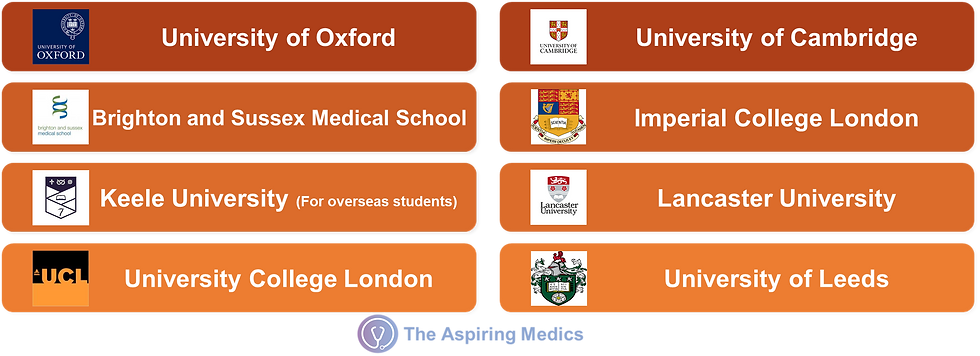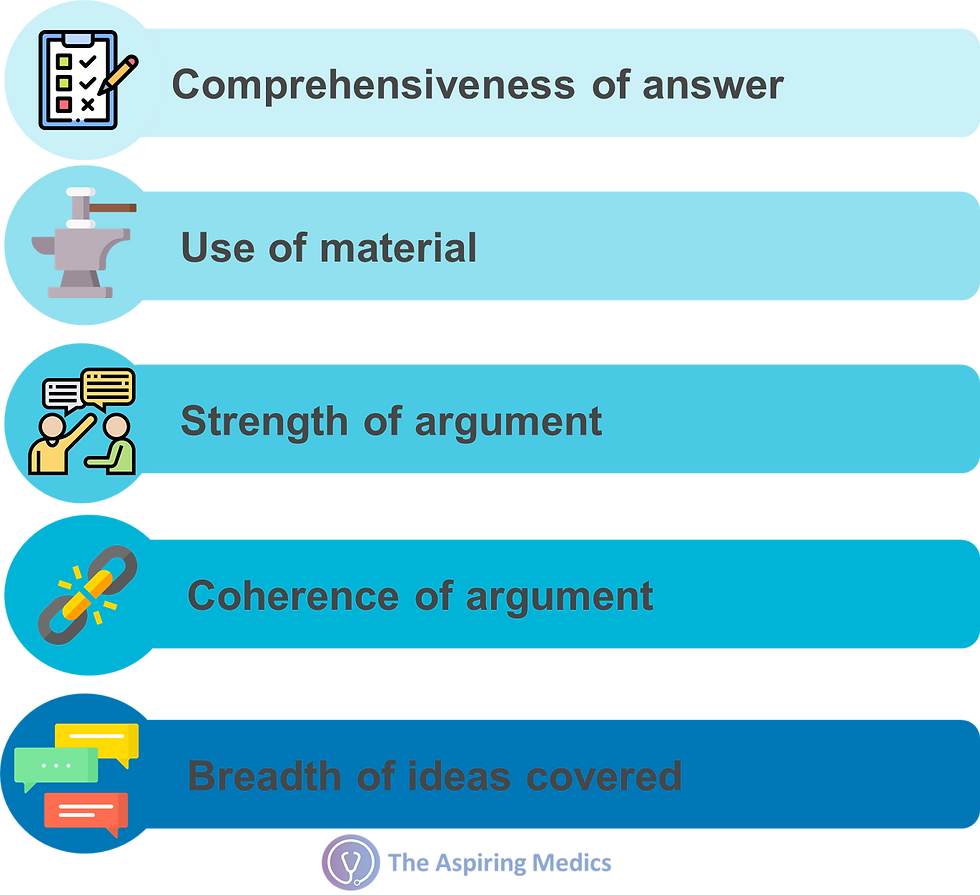BMAT Overview, Key Dates & Scores
- The Aspiring Medics

- Sep 29, 2022
- 4 min read
What is BMAT? Do I have to sit the BMAT? How is it different from the UCAT? How do I prepare for it? If you are troubled by questions like these, don't worry, we are here to help set things straight! Below is a comprehensive overview of BMAT that you can pick up easily, where we cover all your burning questions.
🤨 What is BMAT?

Used by some of the top medical schools in the UK, BMAT is a 2-hour, pen & paper test (for 2022 candidates) that’s split into three sections. The first two sections are multiple choice questions, while the third is a writing task, scored separately.
✏️ Do I need to sit the BMAT?
It depends on where you want to apply! Here’s a list of UK medical schools using BMAT, with links to their homepage down below if you want to learn more about it!

University Homepages:
University of Oxford
University of Cambridge
Brighton and Sussex Medical School
Lancaster University
University of Leeds
🗓BMAT exam date

!! This year’s BMAT exam has been moved forward by 2 weeks to 18th October, 2022!!
This means less time for you to prepare for BMAT, so we do recommend you start planning your preparation early. Read the specification, identify your weaknesses and build a revision plan accordingly until the exam date!
📋BMAT Format
BMAT is a 2 hr, pen & paper test consisting of 3 sections. Let’s break down the sections here! Also, our practice tips on each section are coming up soon, so don’t forget to bookmark this page!

Section 1
Thinking skills. This section is 60 mins long, with 32 questions in total.
Section 1 is divided into problem solving & critical thinking, each with 16 questions.
Problem solving is GCSE-level maths skills applied in real world scenarios, although you cannot use a calculator.
Critical thinking tests your ability to analyse passages and make choices accordingly. You may see either a short passage, or a longer one with multiple questions associated.
Section 2
Scientific Knowledge and Applications. This section is 30 mins long, with 27 questions in total. It tests your understanding and application of GCSE level scientific knowledge. See question distribution down below!

Now let’s be real, BMAT spec goes beyond any singular GCSE exam board’s specification in both breadth and depth, so be prepared to learn new theories and skills. However, it is not rocket science, and with learning and practice you can definitely excel in BMAT. What it does mean is that we recommend you read the specification, highlight anything you are not familiar with, and go study, go practice.
Section 3
Writing task. This section is 30 mins long, with a choice of 3 topics to write with. Your answer is limited to an A4 paper.
Topics are presented as a statement or a quote.
You will be asked some questions after the topic to help you construct the essay. Please make sure you answer all questions in your essay!!!
💯BMAT Scoring
The result of BMAT is separate for the 3 sections.
Section 1 & 2
The first two would give you a score between 1~9 each, 9 being the highest score, with the average fixed around 5 for each year. Here's an example of the distribution of results, based last year's statistics:


These scores are converted from the ‘raw mark’ (i.e., the number of questions you got correct) in each section, and this allows comparison between different candidates.
This exact algorithm is not published, but you can find conversion tables online to convert your raw marks to BMAT scores! Please note that these tables would be slightly different for each year’s exam.
Section 3
Section 3 is manually marked by two examiners, with 2 criteria. Let's see the score distribution of last year first:

And let's break down the two components of your Section 3 scores:
Quality of English
Scored as a band A~E, this is associated with your use of vocabulary, grammar, and fluency of your essay.
If you are fluent in English, this is typically not a problem, but do practice if you think there’s room for improvement.
Quality of content
Scored from 1~5 with 5 being the highest score, this is marked according to the following:

⚖️BMAT v.s. UCAT: Key similarities and differences
The UCAT is another admission test used by a wider consortium of universities, and measures more your aptitude than your academic understanding. See this blog to learn more about UCAT!
If you think you need to take both exams, or are unsure which one you should do, we’ve provided a table to compare & contrast the similarities & differences of the two exams, so you can see clearly the transferrable skills and what’s best suited for you!

*If you intend to take both the BMAT and the UCAT, we recommend booking and preparing for the UCAT as early as possible, so you have adequate time to prepare for both.
💰Cost & Bursary
The BMAT costs £75 within the UK & the EU. It is £100 in other parts of the world. This is usually paid via your school’s exam office.
If you think you are eligible for bursary, check out this link for more information. The official BMAT bursary scheme hasn’t come out yet, but you can check if you meet the criteria!
🏫How Oxbridge uses BMAT
Most students have to sit the BMAT in late October/early November meaning you will not have your results before submitting your UCAS application. The results of the BMAT are considered by Oxford tutors during the interview shortlisting process, details of how it is considered can be found here:


